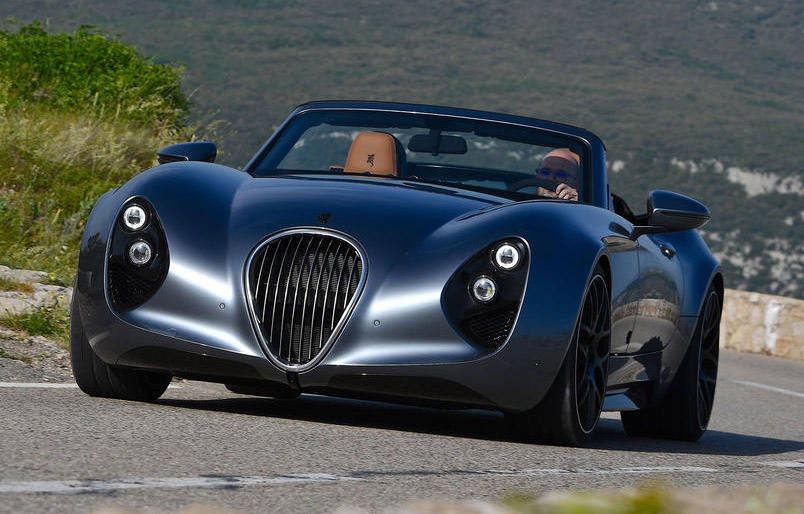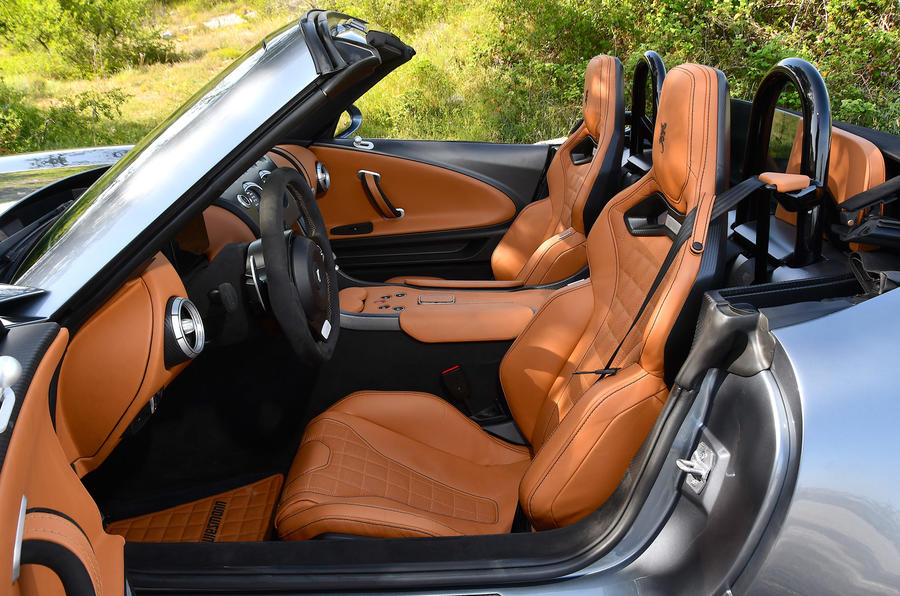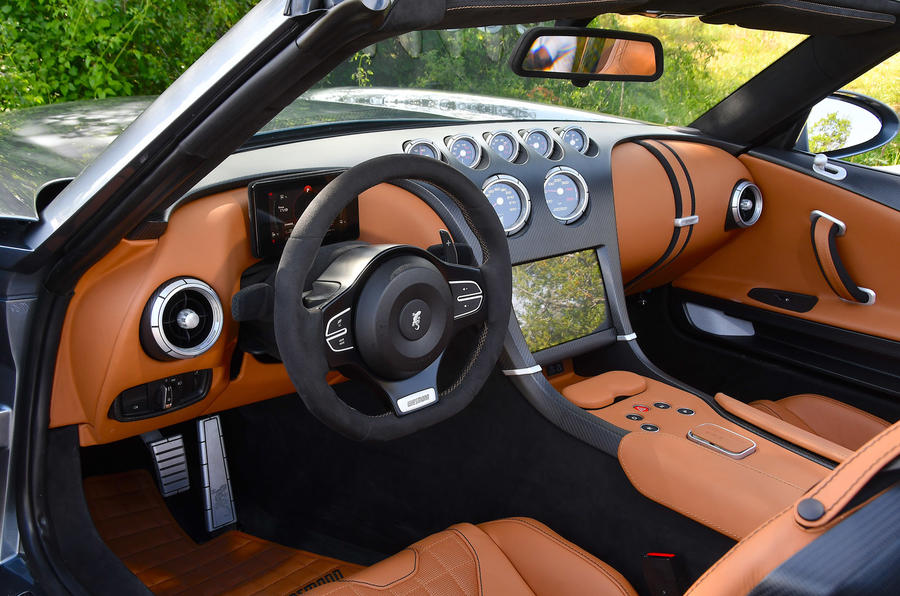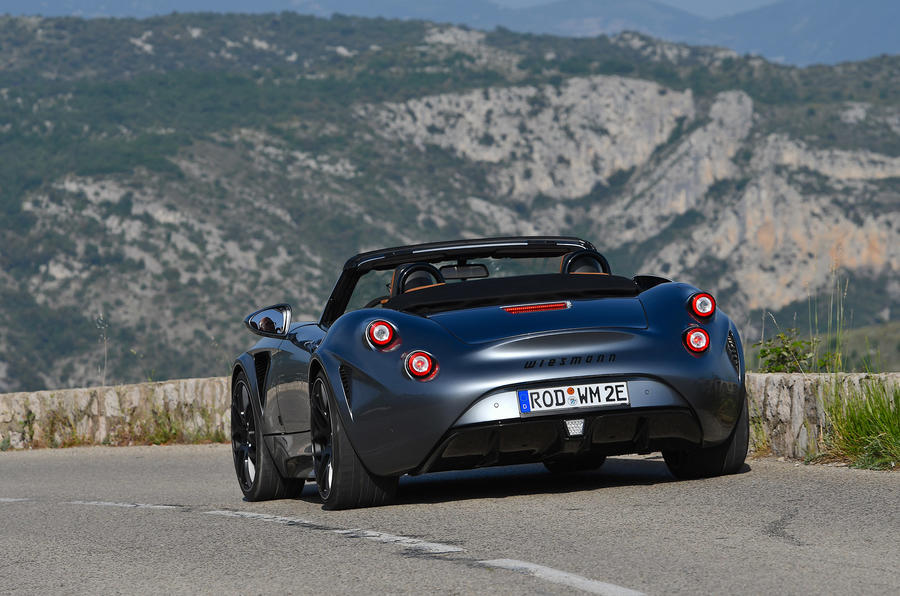Known for retro-style sports cars, Wiesmann is now set on making a properly engaging EV.
If Wiesmann gets its skates on, the end product of Project Thunderball will be a unique proposition: a fully electric roadster that’s focused on driving satisfaction more than outright performance. The Teslarati will of course refer us quickly to the Tesla Roadster of 2008, but we’re looking at something different here. This is a ground-up development, not simply a motor and battery transplanted into an existing chassis.
Project Thunderball’s story began in 2019, when the wilfully retro German car maker launched Project Gecko – its first all-new model in more than a decade after several years of uncertainty over its future. Like the rest of Wiesmann’s back catalogue, it was going to be powered by an engine shipped in from BMW’s M division, until the company pondered offering an electric iteration, too. The idea gathered pace and the resources of Wiesmann’s modest engineering team were quickly pointed in just one direction, as the possibility of bragging rights to the only electric roadster on sale dangled tantalisingly ahead. At least until Porsche launches its much cheaper plug-in Boxster…
With rear drive and no torque vectoring, there’s a pleasing naturalness to the car’s performance. I hope Wiesmann dares to resist the usual bombastic EV acceleration come full production.
“If we were 500 people and could do both ICE and EV at the same time, we would,” says Wiesmann marketing man Arne Kastner. “But as a very small but selective group, we had to make our priorities. It was not easy to convince everybody we should focus on electric, but the more the project progressed, the more fascinating it got. People are afraid of new things, like in all walks of life. We have people who have engineered internal-combustion cars for 40 years and suddenly we’re asking them to do things differently. But we would be kind of stupid to not take this extraordinary opportunity and let others take the first steps instead of us.”
The fundamentals are promising. Beneath is a bespoke aluminium monocoque, representing the same concept as Wiesmanns of old, but with the technology 15 years newer. The same goes for the carbonfibre (rather than glassfibre) panels atop. Two electric motors sit on the rear axle for 500kW and 1100Nm peaks. With around 1700kg to shift and weight split as close to 50:50 as Wiesmann can manage – the car’s still in its development phase – that means 0-100km/h in 2.9sec. Perhaps even more impressive is its 83kWh usable battery capacity and 800V high-voltage architecture, which means a range north of 480km and ultra-fast charging. Wiesmann’s usual engine partner isn’t available: given electric technology is still in its infancy and global supply chain issues continue unabated, BMW was never going to freely dish out motors and batteries to the gecko-shaped factory in Dülmen. So Wiesmann has partnered with Roding Automobile for the powertrain.
The two motors feed the input shaft of the single-speed Hewland gearbox as opposed to operating individual wheels via any form of torque vectoring. That’ll come with future Wiesmann EVs, I’m told, but for now there’s a good old-fashioned mechanical limited-slip differential and – by production – traction and stability control systems to keep that prodigious power in check. We’re the first media outlet in this prototype, and none of the safety nets – ABS included – is yet switched on. Crikey.
While the Thunderball is designed to shun complexity – Wiesmann has stuck with two rows of analogue dials even for new-age readouts such as battery temperature – there are a few additions compared with those old BMW M3- and M5-engined hot rods. You can cycle through Eco, Normal and Sport drive modes, altering power output, and there’s a Launch Control mode and five levels of regenerative braking, toggled via paddles lurking behind the same wheel you’ll find in a modern Morgan (albeit here there’s an airbag and numerous buttons).
Sparking the Thunderball into life is simple. After hurdling through the small door aperture, you nestle into a sharply appointed sports seat and, foot on the brake pedal, press the starter button to whirr the motors into life before prodding the centrally mounted D button and pulling away like you do in any other automatic car. With a powertrain more easily spread throughout the car, there are more cavernous footwells and less pedal offset here, too. Luggage space is strong front and back as well.
This is where the caveats stack up. I’ve been blessed with a drive in this working prototype on the majestic Col de Vence in southern France. The gradients are dramatic and the sun is roasting in the mid-30s. With the car’s cooling systems not yet finalised, its battery swiftly de-rates, meaning peak power dips and the regen systems aren’t at their most potent. In their strongest setting, they can slow the car to a halt and you can dictate the car’s pace with the paddles on undulating roads like these. Just not today, sadly. Offering around 75 per cent of its eventual peak power, this Thunderball still isn’t short of haste. But without the AWD and torque shuffling we’ve come to expect from high-powered EVs, it’s welcomingly short of sledgehammer acceleration.
Allow me to explain. The current preoccupation with electric performance cars seems to be turning their facet of instant torque into gobsmacking performance. Objectively, a 2.5-tonne SUV dumping near-supercar levels of power instantly to the ground is quite a feat. But for those of us who love engaging with the minutiae of a car’s responses, it’s like having a rug whipped violently from beneath as those violent launch control systems engage. It can actually be quite nauseating. For now, this car’s relatively rudimentary mechanical LSD and RWD layout lends some welcome progression to how speed builds and there’s a natural throttle response that has been absent from the most frantic EVs we’ve sampled thus far. Wiesmann may have had to appease the ‘0-62mph marketing’ fad with its own Launch Control mode, but here’s hoping the Thunderball’s progressive mid-range acceleration can be kept intact.
Steering, brakes and suspension are in even earlier stages of development than the powertrain and a long way from the delightful cohesiveness of the firm’s E90 BMW M3-engined MF4. But the prototype’s steering really impresses, boasting lots of natural weight and bubbling with communication about what the front wheels are up to, which gives me more confidence than I dared hope for to power out of corners with no ESP safety net. There’s so much mechanical grip that I’ve got nothing to worry about, and I soon build up a lovely flow along this most technical of roads. The full 1100Nm might have caused issue, mind you, and I’m soon pondering whether a hypothetical single-motor car with no electronic aids would prove just as much fun as a finished twin-motor car with functional traction systems.
The upshot of which is to say this is an unfinished car brimming with promise. Its lack of voice compared with Wiesmann’s M-powered hot rods is tangible, but then that’s a hurdle not even a Porsche Taycan has fully leapt over. The sheer ambition coursing through this car (and the engineers bubbling around it) is infectious. The first ground-up electric roadster isn’t going to be cheap, but it is going to have had a lot of love and attention poured into it.
Stephen Dobie









